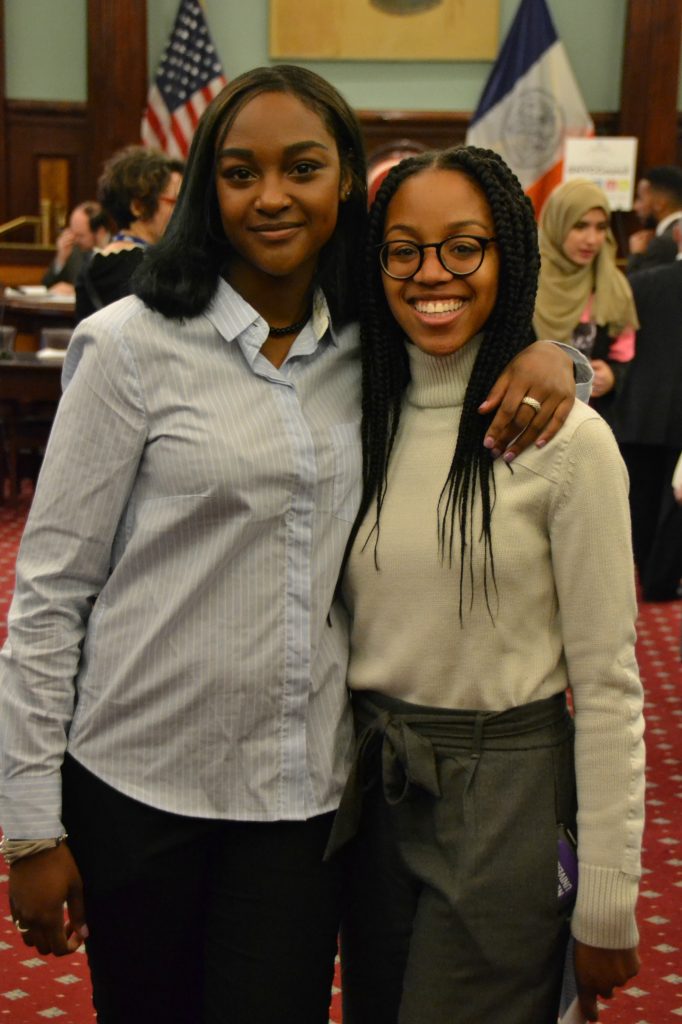On December 7, 2017, Generation Citizen NYC student, Kaira Watts-Bey, submitted public testimony to the New York City Council’s Education Committee. Here she explains her experience in a Generation Citizen class and how it empowered her to address the issue of diversity in New York City public schools. Read on!
Testimony by Kaira Watts-Bey
12th Grade Student at The Urban Assembly School for Criminal Justice
December 7, 2017
New York City Council Hearing re: Oversight: Diversity in New York City Schools
 My name is Kaira Watts-Bey and I am a senior at the Urban Assembly school for Criminal Justice high school. I would like to thank the members of the City Council’s Education Committee, as well as Generation Citizen, for providing me with the platform to be able to speak about my class’ Action Civics project: racial inequality and underrepresentation in New York City public schools.
My name is Kaira Watts-Bey and I am a senior at the Urban Assembly school for Criminal Justice high school. I would like to thank the members of the City Council’s Education Committee, as well as Generation Citizen, for providing me with the platform to be able to speak about my class’ Action Civics project: racial inequality and underrepresentation in New York City public schools.
To give some background, Generation Citizen is a program designed to get civics education back into middle and high school classrooms in an action-oriented way and empower young leaders to exercise their civic duties. GC partners with schools to offer a twice weekly Action Civics class to educate secondary students about how to confront and take effective action to address community issues by engaging directly with politics. I am participating in GC this semester in my Government class.
A majority of the students at my school are Southeast Asian. Throughout my freshman, sophomore, and junior years, I noticed how although we were all coexisting with each other, we lacked unification. I observed how students were afraid to step out of their comfort zones, myself included, and felt more comfortable being friends with other students that were of the same ethnicity as them. One of my African-American friends told me she even heard other girls using the word “Kaali” to describe her, which one of my Pakistani peers explained to me is an offensive term used in her culture to describe people of darker skin.
Picture the men standing on the street with flyers trying to get you to buy the latest cellphone. Most of the time we walk by without even acknowledging them. No matter how much these people try to get our attention, they continue to go unnoticed. At the end of their work day they may have only successfully given away a handful of flyers. This is exactly what happens to minorities such as African-Americans, Hispanics, and Caucasians at my school when it comes to voting for school activities. If others aren’t willing to listen to them, then their voices continue to go unheard due to lack of representation. This year, for example, all five of our homecoming nominees who were voted for by the students, were of the same ethnic group. I was shocked at the outcome of the ballot because it didn’t accurately represent our school’s diverse community. I knew something had to be done.
These past few weeks, my GC college volunteer, who we call a Democracy Coach, Nia has helped my class construct an effective Action Civics plan to address racial inequality and under representation in our school and create structural change. We came up with the idea of having a yearly Student Retreat to reunify students. The trip would consist of breaking off into small groups to have a chance to talk about issues students face at school as well as teach others about their culture, religion, or sexuality so that way misconceptions and stereotypes can be avoided. We felt the best way to unify the students was to show them how they are more similar to each other than they may have originally thought. The Student Retreat would also have a few team-building games to lighten the mood after such intense conversations. The hopes were that if the students can be more open and communicate with each other there would be less separation at school. Hopefully, if our Principal approves this plan it’ll give the opportunity to educate all of the students on the different religions, cultures, and sexualities that they may have not been familiar with, as well as build new friendships. We would hope that other schools and districts can take the same efforts we are in making bridge building and diversity efforts a priority to ensure we are learning in spaces where everyone is equally represented and included.
GC has given me the proper tools to become a successful advocate and showed me that I shouldn’t be afraid to stand up for what I think is right. Before we started this Action Civics project I was very shy. A few weeks ago, I would’ve never pictured myself in this room sharing our project with all of you. GC has taught me that anyone has the ability to effect change no matter who you are.
Thank you again for the opportunity to testify at today’s hearing. I would be happy to answer any questions you may have about my action project or participation in GC’s class this semester.